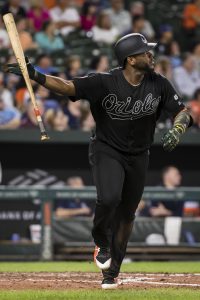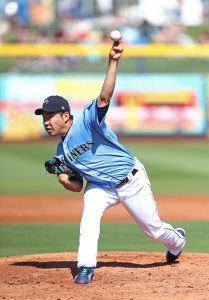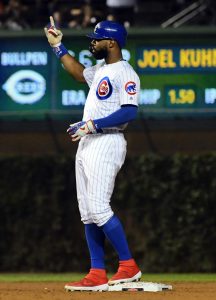With MLB set to propose a half-season of 2020 baseball, followed by an expanded postseason, we could be on the verge of a campaign unlike any other. There’ll be one-off rules on a whole host of topics, among them the player transactions that take place before and during the season.
While we don’t yet know when and how players will be shuttled between rosters, we have a pretty clear picture of the competitive picture that awaits. This is going to be a sprint in which every game counts. Limping through the truncated regular season could leave a talented team outside the playoff picture, or in it but in a disadvantaged position. And the broadened postseason tourney will likewise enhance the importance of winning high-leverage situations.
For teams that are built to compete right now, there’s an opportunity to salvage something out of a season that’s already sure to be a promotional and financial disappointment. While everyone will be watching the bottom line and thinking about sustainability and cost-efficiency, now more than ever, it’s also going to be harder than ever to take a wait-and-see at the trade deadline approach to roster management.
There are loads of potential consequences here for every team. We’ll surely be exploring many of them as the situation gains clarity. The one highlighted here is far from the most important, but it’s indicative of the sort of shifts in the trade marketplace we might see.
In many respects, Orioles reliever Mychal Givens is the perfect trade candidate. Let us count the ways.
Most rebuilding teams have already dealt away their most obvious veteran trade pieces. But the Baltimore organization hadn’t received sufficiently enticing offers on Givens and didn’t feel compelled to move him just yet with one more season of arbitration control remaining. The idea, no doubt, was to let him (hopefully) mow down hitters over the first half of 2020 before cashing him in at the trade deadline. Contenders would feel justified in giving up more value since they’d control him for 2021.
Now, that plan has run into some difficulties … but also some added opportunity. We don’t know if there’ll be a typical trade deadline, but even if there is, it won’t involve a slow build-up that Orioles GM Mike Elias can use to develop scenarios surrounding Givens.
On the other hand, the short-season burst will leave contenders hunting for replacements without the luxury of watching a lot of 2020 baseball. The focus will be on physical tools as demonstrated most recently, results be damned. Teams typically have more than 82 games to witness repeat testing of players before making deadline decisions. By that point, the season will be over. Teams that want to improve mid-season will have to simply imagine what is possible.
It’s reasonable to expect Givens to fare well in this analysis, whether he’s discussed in trades before or during the season. He looks the part of a monster on the mound, consistently averaging over 95 mph with his fastball in every season of his career. Ramping up the use of his change-up to equal status with his slider, and pairing it with that heater, enabled Givens to jump to a hefty 15.8% swinging-strike rate and 12.3 K/9 in 2019. True, he also coughed up 1.86 homers per nine innings, but it’s not hard to imagine that number moving back towards his career mean (0.95 per nine), especially once he’s removed from Camden Yards and the AL East. If you’re a team that routinely re-envisions how your pitchers use their arsenals, there’s no better raw material to work with.
And that also brings us back around to the point we started with: the importance of leverage. Locking up winnable games, both during the regular season and through the postseason, is going to be key. The O’s know this better than anyone, having benefited from several campaigns in which they thrived in one-run contests. Even a talented team with good health and generally good performance can experience rather significant swings in actual victories based upon just a few moments in certain close contests. And that’s all the more true in knockout rounds of the playoffs.
Givens becomes quite an appealing weapon under these parameters. He has been a workhorse, averaging over seventy frames annually over his four full seasons in the majors. More than ever, an acquiring team could envision a significant impact on its fortunes from inserting a pitcher with this skillset into its relief corps.
Further greasing the wheels here is a favorable contract situation. As noted, Givens is controlled for 2021. His salary this season is only $3.225MM and can only move northward by so much through the arbitration process. As clubs think ahead to building a winner in lean economic times, this is precisely the sort of asset they’ll wish to have.
It remains all but entirely unknown how the transactional landscape will develop. But so long as some player movement is permitted, I’m guessing that Givens will be one of the most-discussed and most-watched players as MLB’s 2020 season relaunches.



